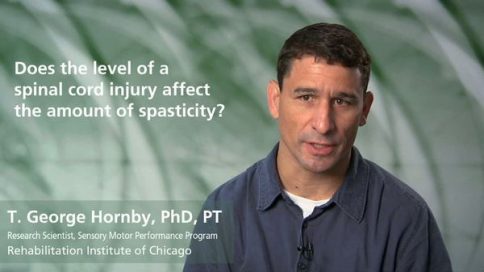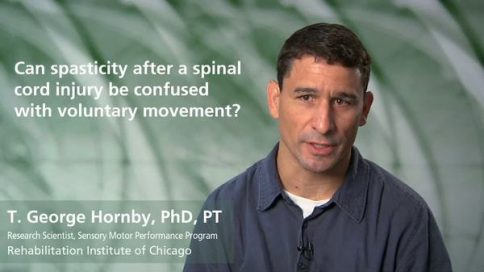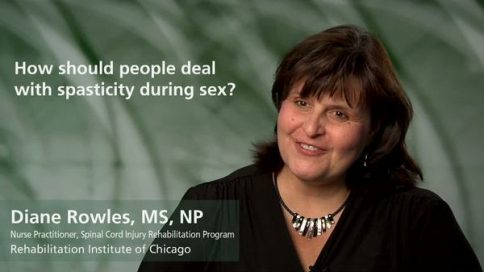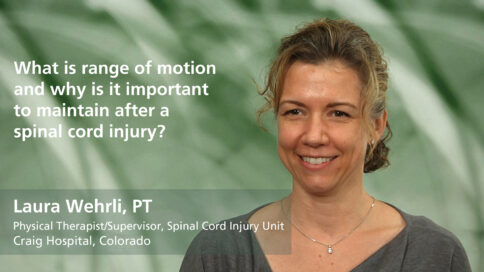Why does spasticity occur after a spinal cord injury? - T. George Hornby, PhD, PT
|
|
Why does spasticity occur after a spinal cord injury? |
|
T. George Hornby, PhD, PTResearch Scientist, Sensory Motor Performance Program, Rehabilitation Institute of Chicago |
||
| Read Bio | More Videos by T. George Hornby | |
|
Share |
||
Transcript
Spasticity occurs after a spinal cord injury because essentially your spinal cord wants input. It's used to input all through your life, because you're giving your brain input to your spinal cord all the time to move. Now you've lost that connection, so your spinal cord is thinking, "Okay, where I get that input, so I'm going to get it from wherever I can get it." And it's coming from your skin, and from your legs, anything below the level of the injury.
Show Less|
|
||
add
Why does spasticity occur after a spinal cord injury? |
||
T. George Hornby, PhD, PTResearch Scientist, Sensory Motor Performance Program, Rehabilitation Institute of Chicago |
More Videos by T. George Hornby | |
| Transcriptadd | share | |
Spasticity occurs after a spinal cord injury because essentially your spinal cord wants input. It's used to input all through your life, because you're giving your brain input to your spinal cord all the time to move. Now you've lost that connection, so your spinal cord is thinking, "Okay, where I get that input, so I'm going to get it from wherever I can get it." And it's coming from your skin, and from your legs, anything below the level of the injury.








